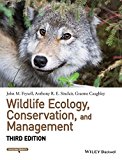
Wildlife Ecology, Conservation, and Management, Third Edition PDF
Preview Wildlife Ecology, Conservation, and Management, Third Edition
This book is structured as two interlocking parts. The first provides an overview of
wildlife ecology, as distinct from that portion of applied ecology that is called wildlife
management and conservation. The chapters on wildlife ecology (Chapters 2–11)
cover such topics as growth and regulation of wildlife populations, spatial patterns
of population distribution, and interactions among plants, herbivores, carnivores, and
disease pathogens. While these topics are often covered in introductory biology or ecology
courses, they rarely focus on the issues of most concern to a wildlife specialist. A
solid understanding of ecological concepts is vital in formulating successful wildlife
conservation and management policy. In particular, you will need an understanding
of the theory of population dynamics and of the relationship between populations,
their predators, and their resources if you are to make sensible judgments on the likely
consequences of one management action versus another.
The second section deals with wildlife conservation and management (Chapters
12–22). These chapters cover census techniques, how to test hypotheses experimentally,
how to evaluate alternative models as tools for conservation and management,
and the threemajor aspects of wildlife management: conservation, sustained yield, and
control. In closing, Chapter 22 places the problems of wildlife management into the
context of the ecosystem. Species populations cannot be managed in isolation because
they are influenced by, and they themselves influence, many other components of the
ecosystem. In the long run, wildlife management becomes ecosystem management.
